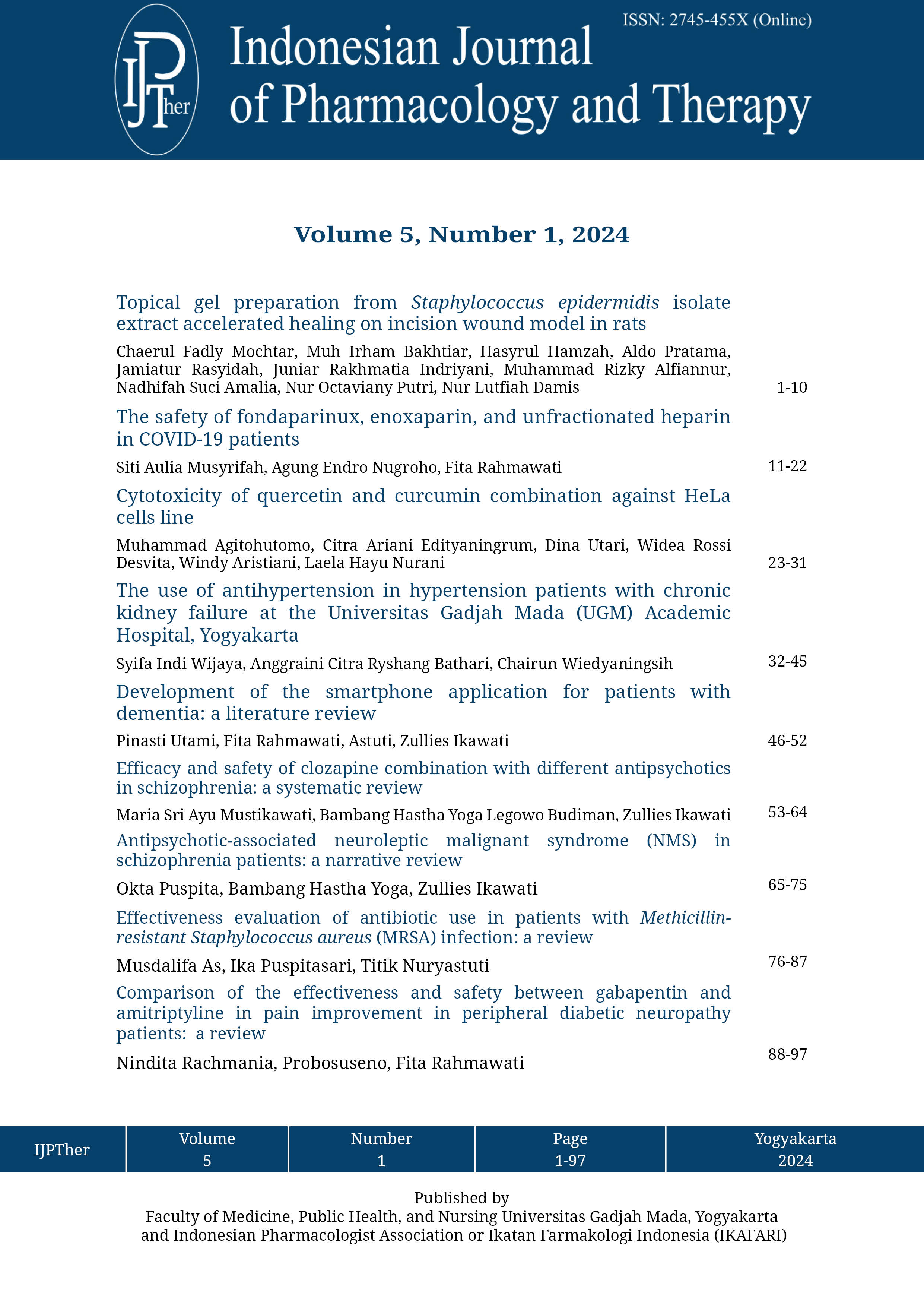Development of the smartphone application for patients with dementia: a literature review
Abstract
Primary technological developments are advancing rapidly, and dementia patients and caregivers are becoming more open to online interactions for enhancing dementia care. However, most existing applications only focus on patients, and there is a need to expand their scope to include caregivers. Ideally, the application should be designed with the caregiver in mind, and considering the impact they experience while caring for dementia patients. Families are specifically targeting caregivers who are at the highest risk of experiencing caregiver burnout, such as those caring for patients. This literature review described the necessary functions and content for dementia caregivers, serving as a reference for designing, developing, and implementing smartphone solutions that meet user needs. This review utilized articles from three databases i.e. PubMed NCBI, ScienceDirect, and Tandfonline. The Boolean approach method was used to generate the exact keywords. The inclusion criteria for this study encompassed smartphone applications for dementia patients, focusing on function and content, published in English-language journals within five last years, with an emphasis on original research and free full access. In this review, six articles were obtained. From these six articles, four findings related to functions and content were identified i.e. education, interactive health promotion, interaction stakeholder, and referencing information sources. These four aspects could serve as references for developing comprehensive smartphone applications for caregivers, and facilitating integrated health care.
References
Perhimpunan Dokter Spesialis Saraf Indonesia (PERDOSSI). Panduan praktik klinik diagnosis dan penatalaksanaan demensia. Jakarta: PERDOSSI, 2015.
Park JYE, Tracy CS, Gray CS. Mobile phone apps for family caregivers: a scoping review and qualitative content analysis. Digit Health 2022; 8:20552076221076672.
https://doi.org/10.1177/20552076221076672
Ernsting C, Dombrowski SU, Oedekoven M, Sullivan JLO, Kanzler E, Kuhlmey A, et al. Using smartphones and health apps to change and manage health behaviors: A population-based survey. J Med Internet Res 2017; 19(4):e101.
https://doi.org/10.2196/jmir.6838
Maidment ID, Aston L, Moutela T, Fox CG, Hilton A. A qualitative study exploring medication management in people with dementia living in the community and the potential role of the community pharmacist. Health Expect 2017; 20(5):929-42.
https://doi.org/10.1111/hex.12534
He Z. When data protection norms meet digital health technology: China’s regulatory approaches to health data protection. Comp Law Secur Rev 2022; 47:105758.
https://doi.org/10.1016/j.clsr.2022.105758
Wilms IL. The computerized cognitive training alliance – a proposal for a therapeutic alliance model for home-based computerized cognitive training. Heliyon 2020; 6(1):e03254.
https://doi.org/10.1016/j.heliyon.2020.e03254
Moses JC, Adibi S, Shariful Islam SM, Wickramasinghe N, Nguyen L. Application of smartphone technologies in disease monitoring: a systematic review. Healthcare (Basel) 2021; 9(7):889.
https://doi.org/10.3390/healthcare9070889
Levinson AJ, Ayers S, Butler L, Papaioannou A, Marr S, Sztramko R. Barriers and facilitators to implementing web-based dementia caregiver education from the clinician’s perspective: Qualitative study. JMIR Aging 2020; 3(2):e21264.
Perry W, Lacritz L, Roebuck-spencer T, Silver C, Denney L, Meyers J, et al. Population Health solutions for assessing cognitive impairment in geriatric patients. Innov Aging 2018; 2(2):igy025.
https://doi.org/10.1093/geroni/igy025
Ahmad MF. IRING TemaniKu: A grab-style integrated application of e-Healthcare chaperone services for the elderly living at home in Malaysia. Procedia Comput Sci 2022; 215:112-20.
https://doi.org/10.1016/j.procs.2022.12.013
Morgan D, Kosteniuk J, O’Connell ME, Kirk A, Stewart NJ, Seitz D, et al. Barriers and facilitators to development and implementation of a rural primary health care intervention for dementia: a process evaluation. BMC Health Serv Res 2019; 19(1):709.
https://doi.org/10.1186/s12913-019-4548-5
Gilson A, Gassman M, Dodds D, Lombardo R, Ford JH, Potteiger M. Refining a digital therapeutic platform for home care agencies in dementia care to elicit stakeholder feedback: focus group study with stakeholders. JMIR Aging 2022; 5(1):e32516.
Phongtankuel V, Shalev A, Adelman RD, Dignam R, Baughn R, Holly G. Mobile health technology is here — but are hospice informal. Am J Hosp Palliat Care 2018; 35(12):1547-52.
https://doi.org/10.1177/1049909118779018
Thoma-Lürken T, Lexis MAS, Bleijlevens MHC, Hamers JPH. Perceived added value of a decision support App for formal caregivers in community-based dementia care. J Clin Nurs 2019; 28(1-2):173-81.
https://doi.org/10.1111/jocn.14647
Borton DA, Dawes HE, Worrell GA, Star PA, Denison TJ. Developing collaborative platforms to advance neurotechnology and its translation. Neuron 2021; 108(2):286-301.
https://doi.org/10.1016/j.neuron.2020.10.001
Fong TG, Inouye SK. The inter-relationship between delirium and dementia: the importance of delirium prevention. Nat Rev Neurol 2022;18(10):579-96.
https://doi.org/10.1038/s41582-022-00698-7.
Aidemark J. Care by video consultations: Why or why not? Procedia Comput Sci 2022; 196(2021):400-8.
https://doi.org/10.1016/j.procs.2021.12.029
Bonnechère B, Sahakian BJ. Can mobile technology help prevent the burden of dementia in low- and mid-income countries? Front Public Health 2020; 8:554938.
https://doi.org/10.3389/fpubh.2020.554938
Valle J, Godby T, Paul DP, Smith H, Coustasse A. Use of smartphones for clinical and medical education. Health Care Manag 2017; 36(3):293-300.



